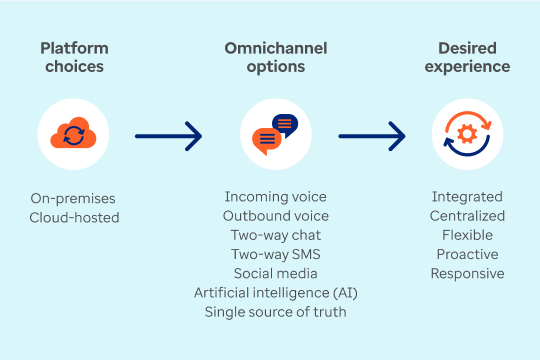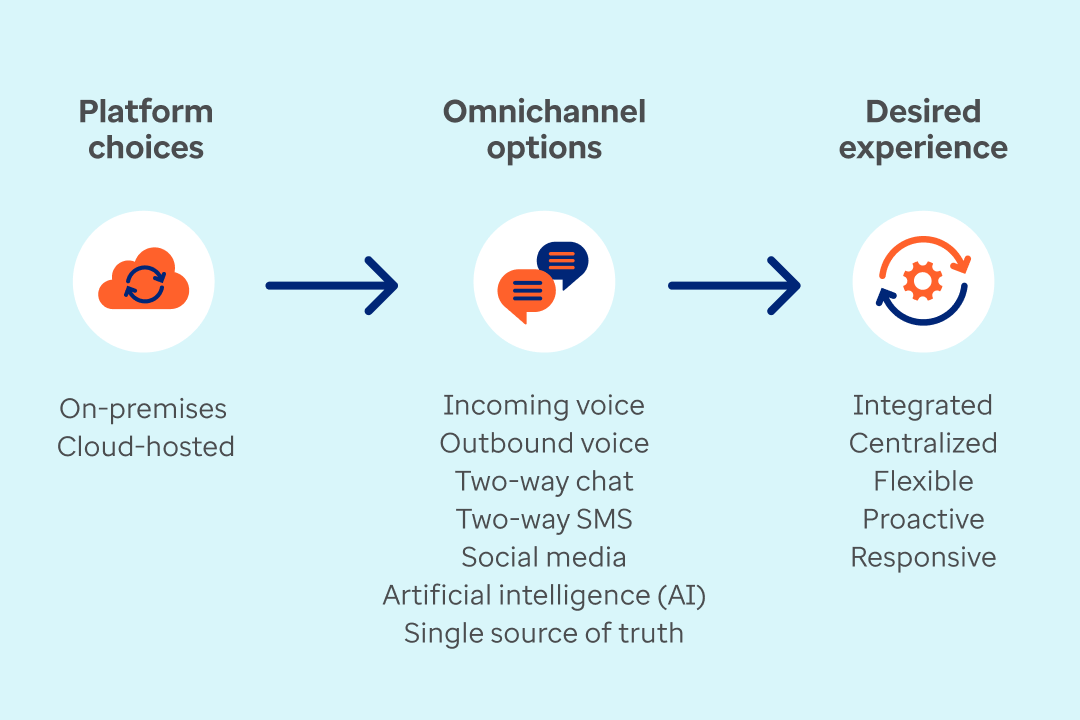This thought leadership panel took place in April 2024 at the Healthcare IT Connect Summit. It explores how modernization can improve the contact center experience for agents, customers and providers. Anthony Flot, chief technology officer for Arizona Health Care Cost Containment System (Arizona’s Medicaid agency); Marcus Garcia, regional vice president, healthcare, at NICE; and Marsha Martin, BPO leader at Optum, discussed major pain points states face as they seek to modernize their contact centers and recommendations to provide a more unified experience. Explore the key takeaways from this important session below.
The art of the possible
From new Medicaid members who need help with enrollment to network providers who are trying to submit claims, the contact center is critical to a positive customer experience. More than ever, states are looking for ways to modernize their call centers to provide a better, more immediate service interaction. That means meeting people on the communication channel of their choice.
There is an array of modernization strategies call centers can adopt. Moreover, significant advancements in call center technology enable an environment primed for change and innovation, allowing states to consider “the art of the possible” — an integrated, centralized call center experience that is flexible, proactive and responsive.
Integrated, centralized and responsive


Integrated, centralized and responsive
The graphic shows three sections from left to right, illustrating the different options/strategies states can take to modernizing their call centers. The left-most section shows platform options states can choose between including on premise or the cloud. In the center are various features states can consider for their omnichannel contact center including Incoming and Outbound voice capabilities, Two-way chat, Two-way SMS, Social media capabilities, AI and consolidated data management for establishing a single source of truth. The right section shows the various attributes of a modern call center that embraces the art of the possible. This includes an experience that is Integrated, Centralized, Flexible, Proactive and Responsive.
Why choose the cloud?
Cloud platform technologies are more affordable than ever before, allowing states to achieve new levels of call center continuity and efficiency not possible with on-premises platforms:
- Centralized — Agents view omnichannel communication methods through a single, centralized interface that eliminates the need for multiple platforms and screens. Agents monitor all communication channels simultaneously and can prioritize their responses based on urgency and need.
- Scalable — Respond quickly to unexpected changes in call center volume, scaling the number of agents up or down as needed without delay or constraints of legacy on-premises solutions.
- Flexible — Data is accessible via API connectivity, availing information to agents to streamline communication. New technology and features can be added quickly.
- Consolidated — Within the cloud, multiple contact centers can exist within the same environment. Different contract vendors can utilize the same cloud service, providing a level of efficiency that is cost-prohibitive with an on-premises platform.
- Carrier failover — Seamlessly fail over to other carriers if a carrier issue is experienced. Even calls in queue are not lost if the call center needs to switch to a new carrier, preventing any disruption in the agent’s ability to answer and connect with callers.
- Disaster recovery — Where on-premises platforms require redundant servers to protect systems from disaster, cloud-based platforms do not. In the event of a disaster, the cloud remains operational and can even redirect customers to agents in areas unaffected by the disaster.
The power of omnichannel communication
For agents and customers, omnichannel communications provide a seamless interaction whereby they can transition from a chat or text to email, phone or other channels without losing context or having to start the dialogue over.
- Agents have a line of sight into all communication channels and can nimbly move from one to the next to fulfill the customer’s request.
- Customers can schedule and reschedule appointments, receive appointment reminders, access directions, and be provided with other pertinent information within the channel where the communication originated.
- As call center agents master one communication channel, opportunities to add another are provided.
Achieving the desired experience
- Regardless of the number of channels or systems involved in resolving an inquiry, the customer has one consistent experience with the call center.
- The agent feels autonomous. They have real-time access to all the information they need to swiftly and accurately resolve an inquiry — ideally within a single screen.
The path to modernization
Retention
- Boost retention by identifying career paths for call center agents. Leverage the knowledge they have gained from thousands of phone calls as trainers, system user subject-matter experts and other support roles.
- Improve job satisfaction with new challenges and goals. As call center agents master one communication channel, provide opportunities to master another.
- Allow for a hybrid workforce.
Automation
- Leverage automation to answer repetitive, basic inquiries to the call center, allowing agents to focus more on fulfilling customer interactions and lowering their stress level by reducing call volume.
- Increase contact center response volumes at a minimal cost, allowing for 24/7 answers to many questions.
- Accurately determine a caller's intent with conversational AI so they are routed accurately from the beginning of the interaction.
- Help agents get quickly up to speed on new technology and help them provide answers more quickly.
- Pull from a knowledge management system that your agency has created so that the information provided is accurate and trustworthy.


